Performance Testing Tools

Light weight rotational resistance (LWRR) tester
Compared with the traditional studded boot apparatus which has 40 kg attached (shown on this page), the LWRR tester uses a spring mechanism and the operators body weight when they are positioned on the unit on their knees. The operators weight and the sprung mechanism is designed to provide a consistent mass and remove the need to transport a further 40 kg of weights around the site or between site.
Like the studded boot apparatus, the LWRR tester has 6 football tags fitted to the base plate which is rotated using a torque wrench to provide a torque or traction (Nm) reading via a digital torque adaptor when the turf gives way. The rotational traction reading is important for surface traction of player footwear during pivoting movements.
Manufacturer: ProPitch, UK.
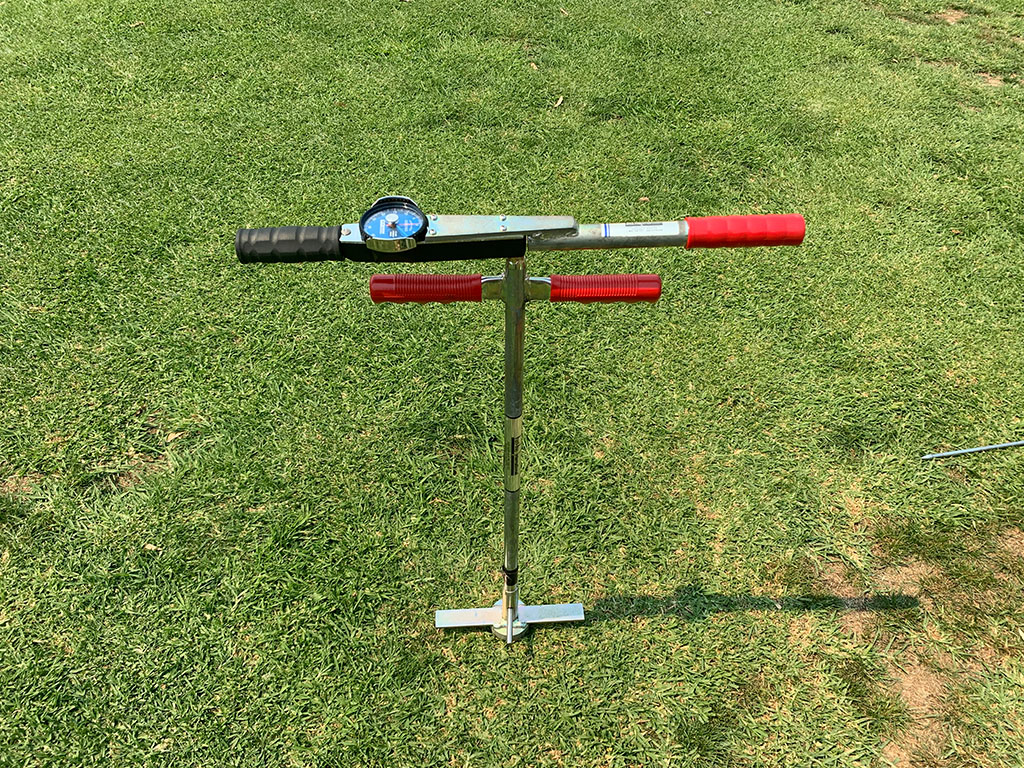
Turf surface shear
To test the stability of a sports field root system and performance of various cleat footwear (types and depths). Turf-Tech Shear Strength Tester (Shear Vane) TSHEAR2-M. ASTC had the first unit to arrive in Australia.
The unit, also known as a shear vane apparatus, allows the operator to assess the stability of a sports field or natural turf root system. In addition to shear vane testing, the Turf-Tec Shear Strength Tester can also be used to test the types and depth of cleats that will perform best in a sports field and environment. This includes home and away or training and game day venues. Knowing the correct cleat for play will ensure proper footing during fixtures or training and will also reduce slipping and create safer playing environments for athletes.
This unit is now used by the AFL and NRL to measure traction.
Manufacturer: Turf-Tech International, USA.

Rotational traction
The studded boot apparatus is used to measure rotational traction of the turf surface. This relates to surface stability and risk injury to players due to insufficient or excessive traction.
The 40 kg mass with 6 (x 16 mm stainless steel) football tags fitted to the base plate is rotated to provide a torque reading (Nm) at which point the turf gives way. The rotational traction reading is important for surface traction of player footwear during pivoting movements.
A digital torque adaptor can also be fitted to provide accurate torque (Nm) readings.
Manufacturer: Formerly Turf Tec Australia.

Surface hardness
2.25 kg Clegg Impact Soil Tester (CIST). Model: GTM (Medium CIST). Units of measurement: Clegg Impact Value (CIV) which are commonly expressed as Gmax (10 Gmax, or gravity, units is equal to 1 CIV). Drop height: 457mm ±3mm of 3 drops as recommended by the manufacturer.
Indicates the shock absorbency of a surface. It gauges the deceleration of a mass (2.25 kg) dropped from height coming in contact with a surface. Shock absorption is important for reducing risk of short and long-term impact injuries, as well as affecting the playing quality of the surface. Surface hardness measurements are generally decreased by increasing soil moisture levels and by reducing soil profile compaction.
Manufacturer: Dr Baden Clegg Pty Ltd, Australia.

Turf colour
The Field Scout TCM 500 portable unit (Spectrum Technologies Inc., USA) measures reflected light from turfgrass in the red (600nm) and near infrared (850nm – NIR) spectral bands. The difference between the two values relates to the chlorophyll concentration and plant health, providing a ‘Turf Colour Meter Rating’. Red & NIR data is presented in three forms: Percent reflectance (0.0 to 99.9) of Red and NIR, Normalised Difference Vegetative Index (0.000 to 1.000 – NDVI), and Grass Index (i.e. 1.00 to 9.00). The Grass Index scale is comparable to the subjective turf colour rating scale (1 = poor; 6 = acceptable and 9 = excellent).
Manufacturer: Field Scout, USA.
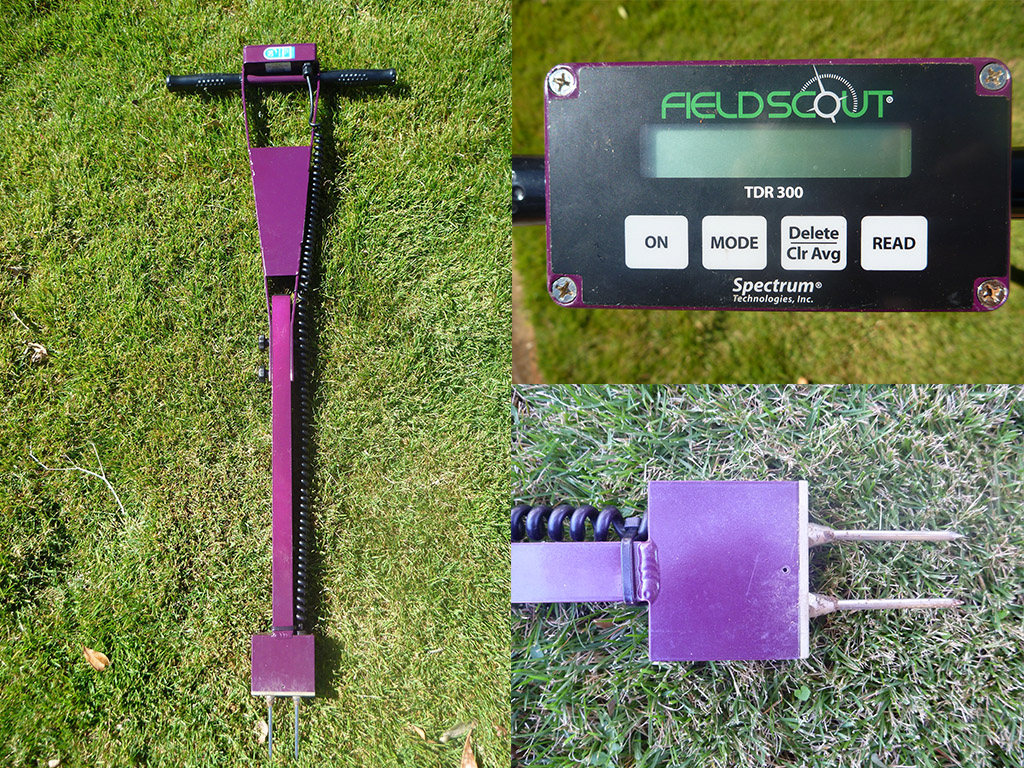
Soil moisture
Field Scout TDR 300 Moisture Meter. Units of measurement: Volumetric Soil Water Content (VSW%). Readings are obtained in the soil to a depth of 60 mm using rapid read out scientific equipment. Readings provide the operator with the dielectric constant of the soil and materials in the soil including liquids and converts to VSW. Besides showing how wet or dry the tested profile areas are the collected moisture readings can be linked to other factors such as hardness, compaction and ball bounce.
Manufacturer: Field Scout, USA.
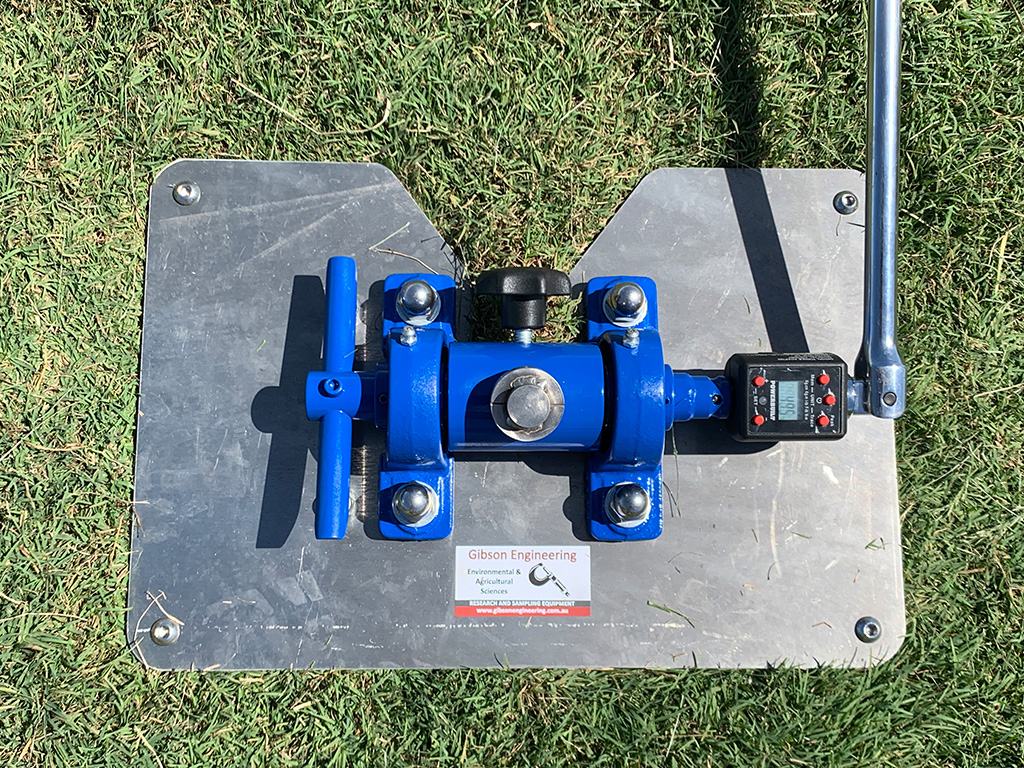
Turf rootzone shear
A tool to measure the stability of the turf surface and rootzone. A 20 mm diameter rod either 50 mm (pictured) or 100 mm long is inserted into the turf surface using a rubber mallet. The torque wrench is slowly pulled (2 second operation) to 45 degrees. A peak torque (Nm) reading is provided.
Such information is valuable in assessing and monitoring rootzone stability for sports fields and horse racing.
Manufacturer: Gill Engineering, Australia.

Going Stick
The GoingStick accurately measures the penetration (the amount of force required to push the tip into the ground) and the shear (the energy needed to pull back to an angle of 45 degrees from the ground). These two measures taken in combination represent a scientifically based proxy for the firmness of the ground and level of traction experienced in the surface.
Manufacturer: TurfTrax, UK.

Turf firmness
The FieldScout TruFirm is used to measure the firmness of turfgrass and bunker sands. Developed by the USGA, the TruFirm meter was developed to provide championship-calibre playability by managing greens that are consistently firm and fast. By measuring the relationship between the compaction of the soil and the moisture level, greenkeepers are able to ensure healthy, aesthetically-pleasing greens that offer exceptional playability.
Manufacturer: Field Scout, USA
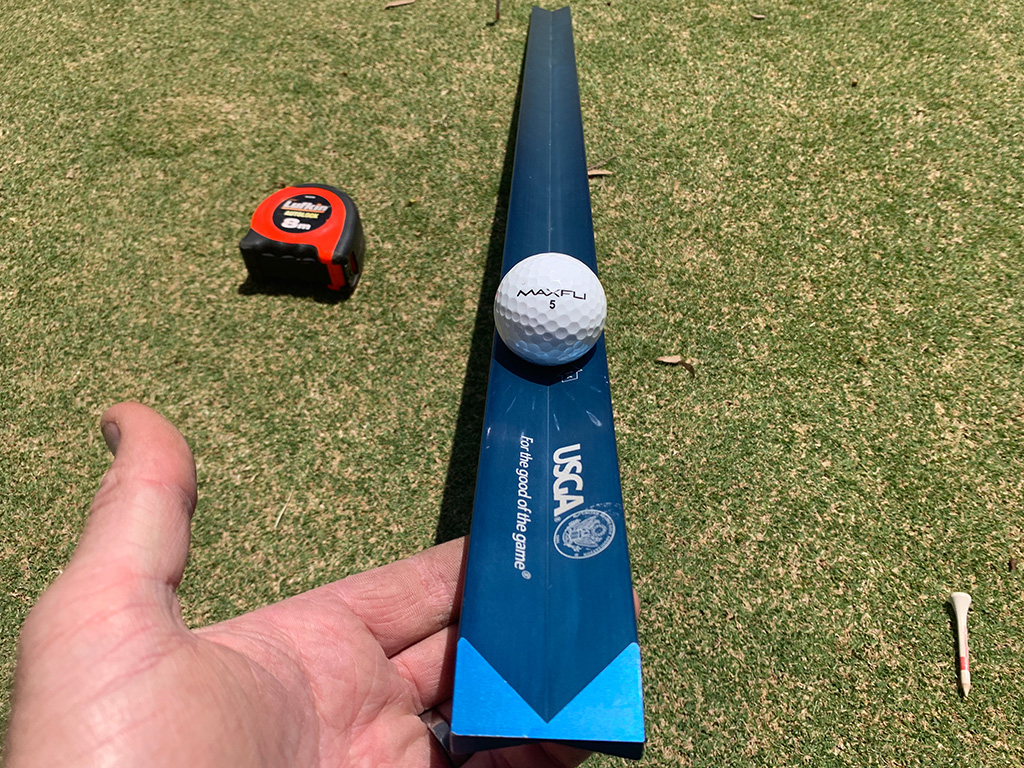
Green Speed
The United States Golf Association (USGA) Stimpmeter is a device used to measure the speed of a golf course putting green by applying a known force by elevating the device while in contact with ground to release a golf ball. This is done on two occasions to determine an average measurement. The result is provided in feet for USA comparison.
Manufacturer: USGA, USA.

Subsoil compaction
Hydraulic Penetrometer. Output is measured in pound per square inch (psi). This tool is capable of measuring compaction at varying depths (e.g. <30 cm if soil profile is penetrable). The penetrometer provides a measure of resistance for the tip to penetrate into the soil. The recorded value is useful in assessing compacted soils and determining the presence of air and water within the soil. If the latter two are limiting and compaction is high, poor growth conditions will be observed.
Distributor: David Von Pein, QLD.
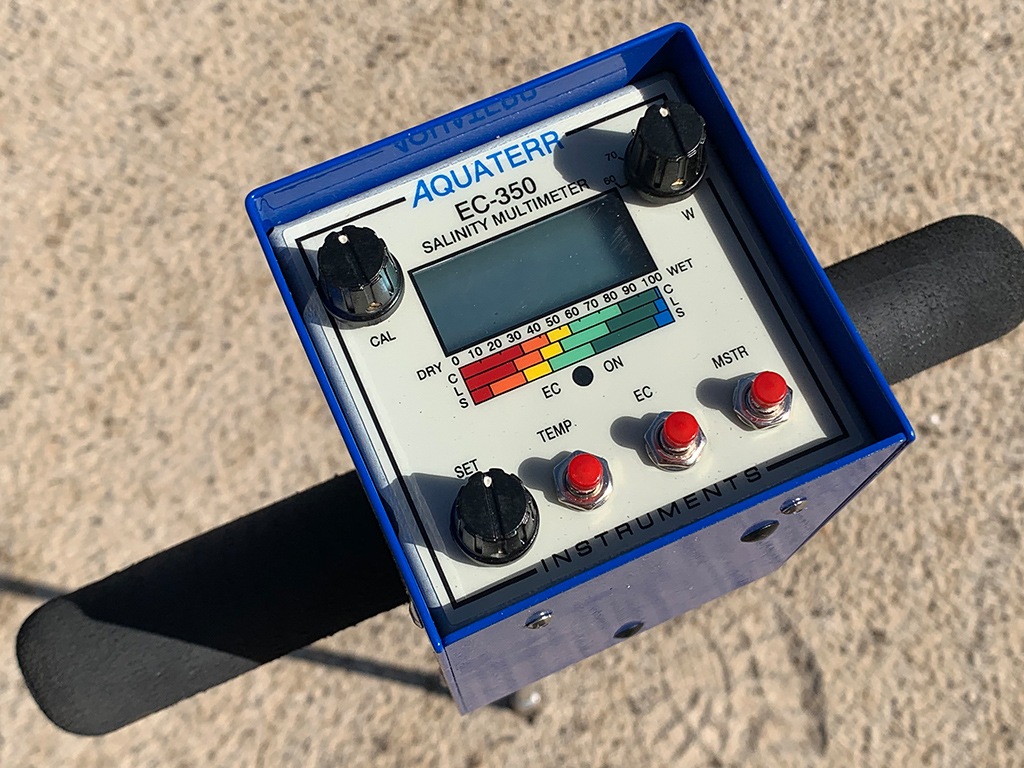
Aquaterr EC-350 Soil Probe
The Aquaterr multi purpose EC-350 soil probe measures soil temperature, salinity / electrical conductivity and soil moisture. The 36 inch (91.44 cm) probe means the user has the ability to collect information at variable depths. This tool is useful in the field and when assessing soil stockpiles.
Manufacturer: Aquaterr, USA.

Surface and subsoil compaction
The Drop Hammer Penetrometer. A 1 kg weight is released by a trigger action and falls 1 metre down a shaft, which in-turn hits a 1 cm square rod into the soil profile. The 1 cm square rod has 1 cm increments as the measurement for the depth the rod that has entered into the soil profile. This action is undertaken three times with each measure recorded including the starting position. The test measures soil compaction, penetration into the surface/soil, due to lack of pore space within the soil profile.
Manufacturer: Gill Engineering, Australia.
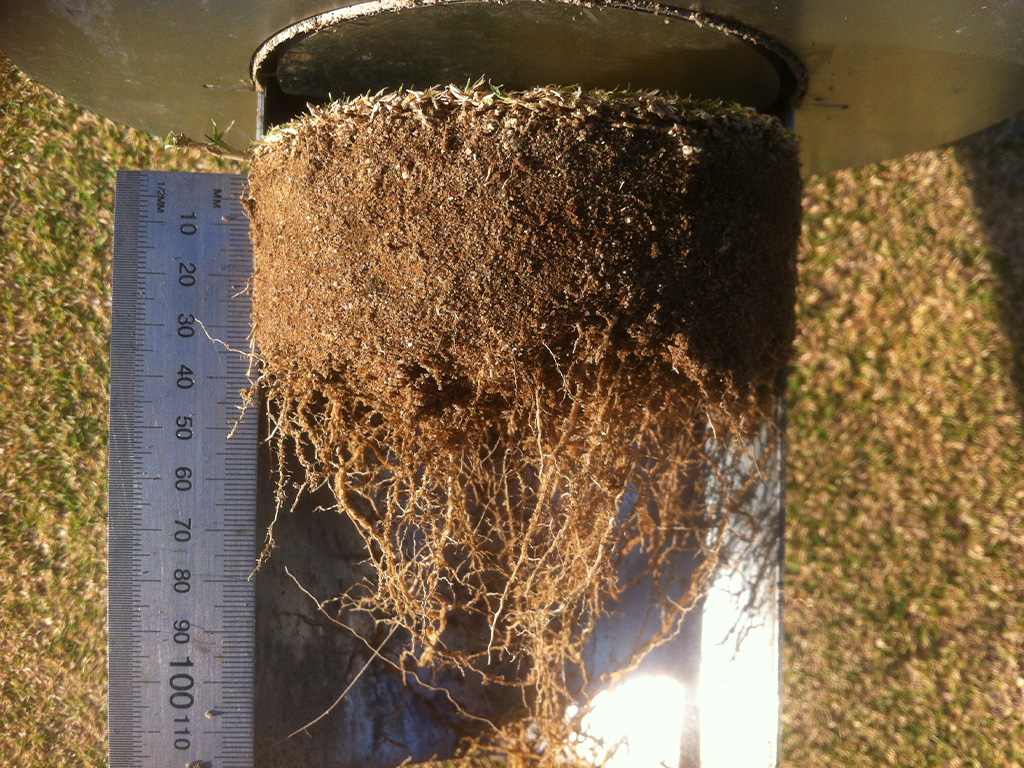
Loss on Ignition (LOI)
Apparatus:
ASTC have both an ashing muffle furnace and a scientific non fan forced oven used for laboratory testing. Loss on ignition (LOI) is a simple method for estimating the content of organic matter and carbonate minerals in the rootzone using the linear relations between LOI values and organic and inorganic carbon content. LOI testing is commonly carried out on golf and bowls greens and within sand profile sports fields to determine the OMC within the rootzone. Such practice is useful for monitoring and determining the amount of physical control (thatch reduction) or amendment (increase in OC) is required. Generally testing is conducted at 2 to 3 depths in increments of 20mm i.e. 0-20mm, 20-40mm and 40-60mm.
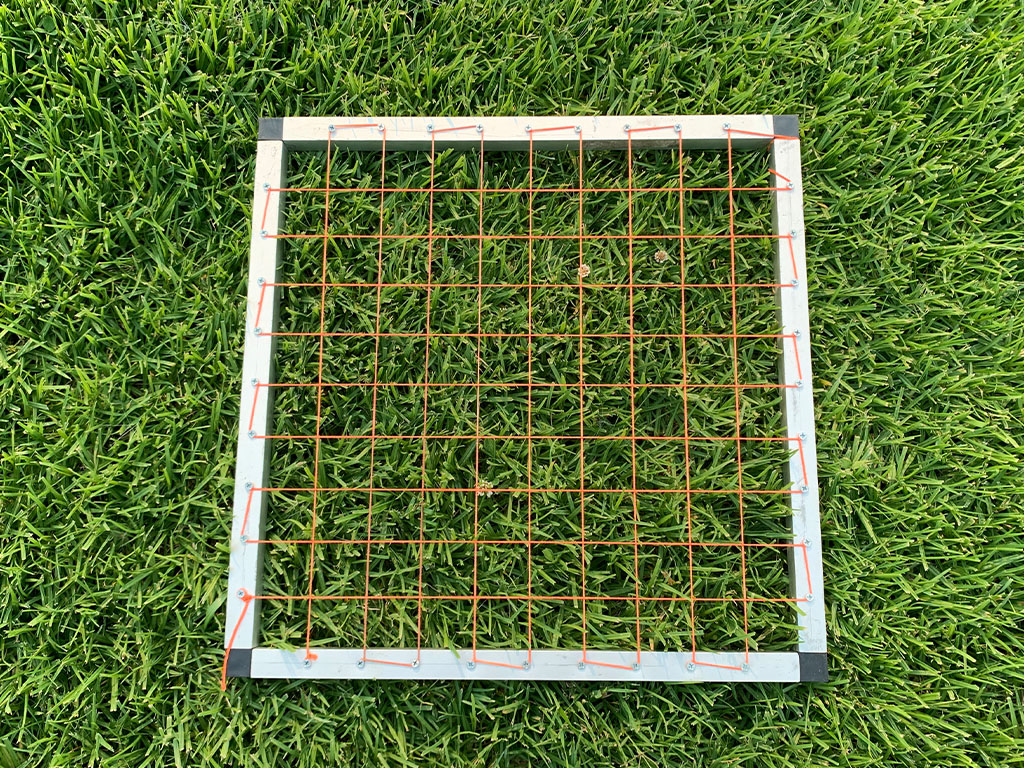
Ground cover
A quadrat contains 100 squares, with each square representing 1%. The quadrat is randomly positioned across the turf surface to determine ground cover, including the percentage of turf, weeds and bare ground.

Ground green cover
A mobile phone app which can be used to measure the percentage of turf/green cover.
Developer:
Canopeo https://canopeoapp.com/
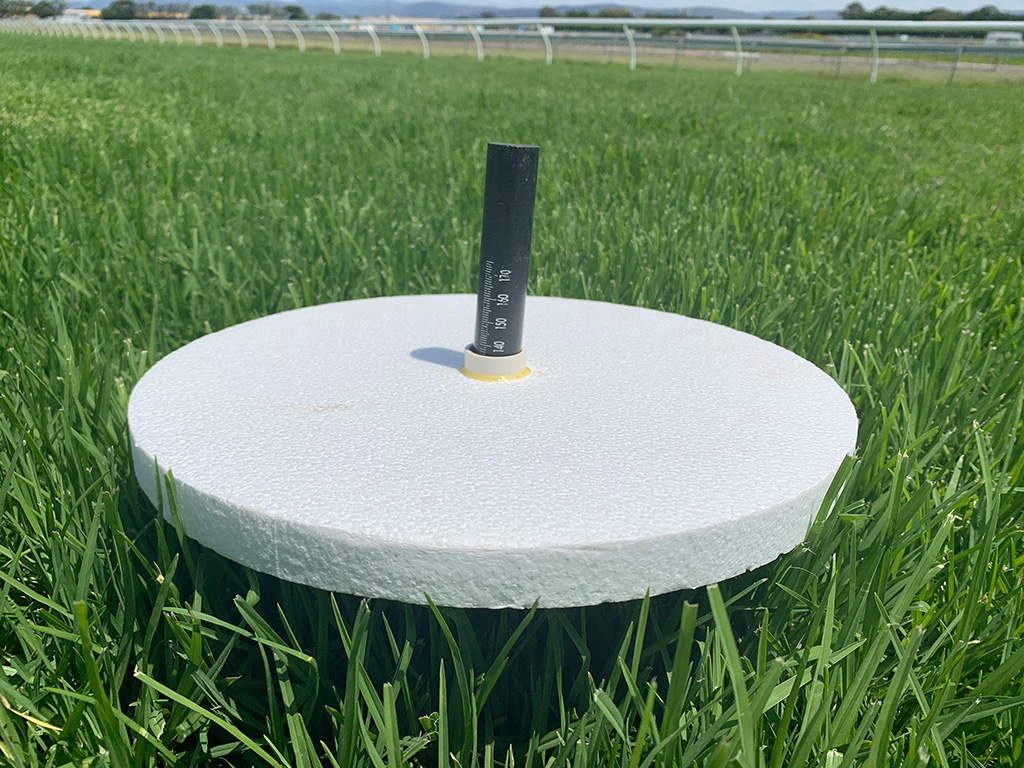
Rising disk
The rising disk is a polystyrene disk and graduated rod used to measure the (mowing) height of the turfgrass under current management.
Distributor: NZSTI, New Zealand.

Soil sampling
ASTC utilise a range of soil samplers including:
– 2 inch 1m and 2 m stainless steel sample tubes and petrol driven hammer (pictured).
– 108 mm stainless steel deluxe holecutter (cup hole change).
– 50 mm and 15 mm stainless steel soil corers.
– turf doctor tool (230 x 230 x 120 mm).
A core sample is taken to investigate plant heath, thatch and root development, identify if anaerobic conditions are present, look at drainage and sub-surface drainage (problems) within the root zone.

Water infiltration
A single or double ring infiltrometer can be made of steel or thick PVC. The material must be capable of being inserted into the turf surface and rootzone usually with force. Infiltration of water through the turf and soil surface (mm/hr). This is critical for efficient irrigation and absorption of rain and for good drainage.
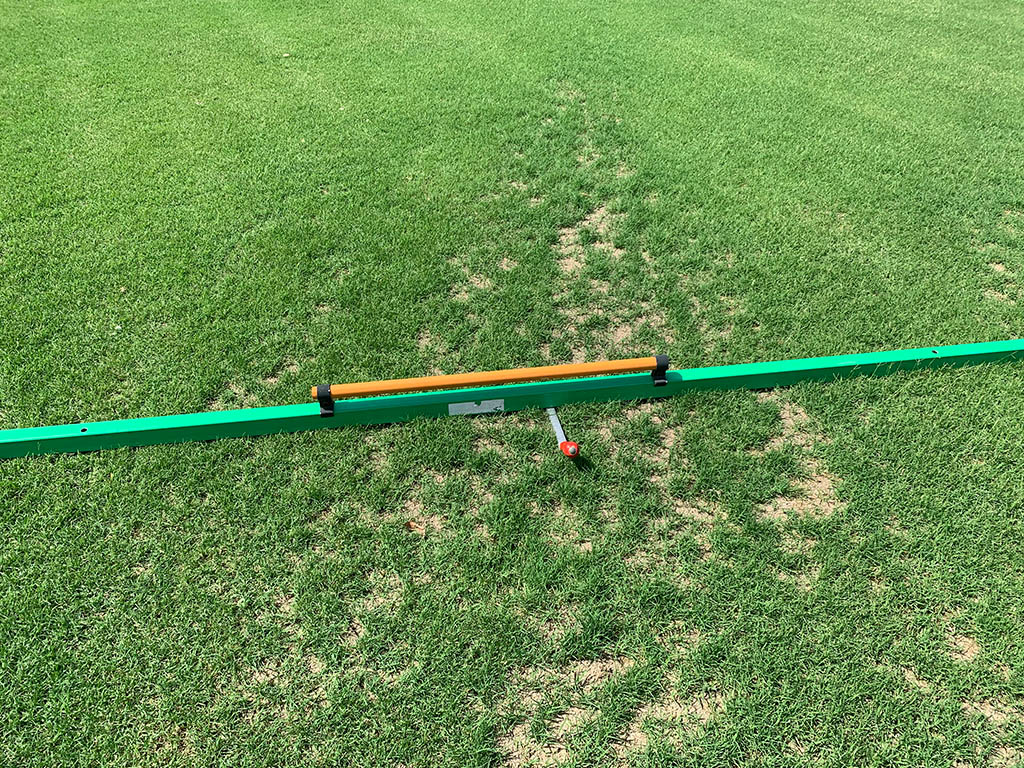
Surface evenness
A 3 metre straight edge and graduated wedge is used to identify micro undulations across a sports field. Undulations are assessed to measure surface unevenness which can impact on player safety and surface playability, including trueness of ball bounce/roll. For most community sports fields, undulations greater than 20 mm or 30 mm is considered unacceptable.

Lawn bowls timing (speed) ramp
The timing ramp, originally used by Bowls Victoria, is used to measure the green speed of a bowling green. A sphere distance of 7.6 m equates to 13 seconds; a distance of 12.3 m equates to 17 seconds.
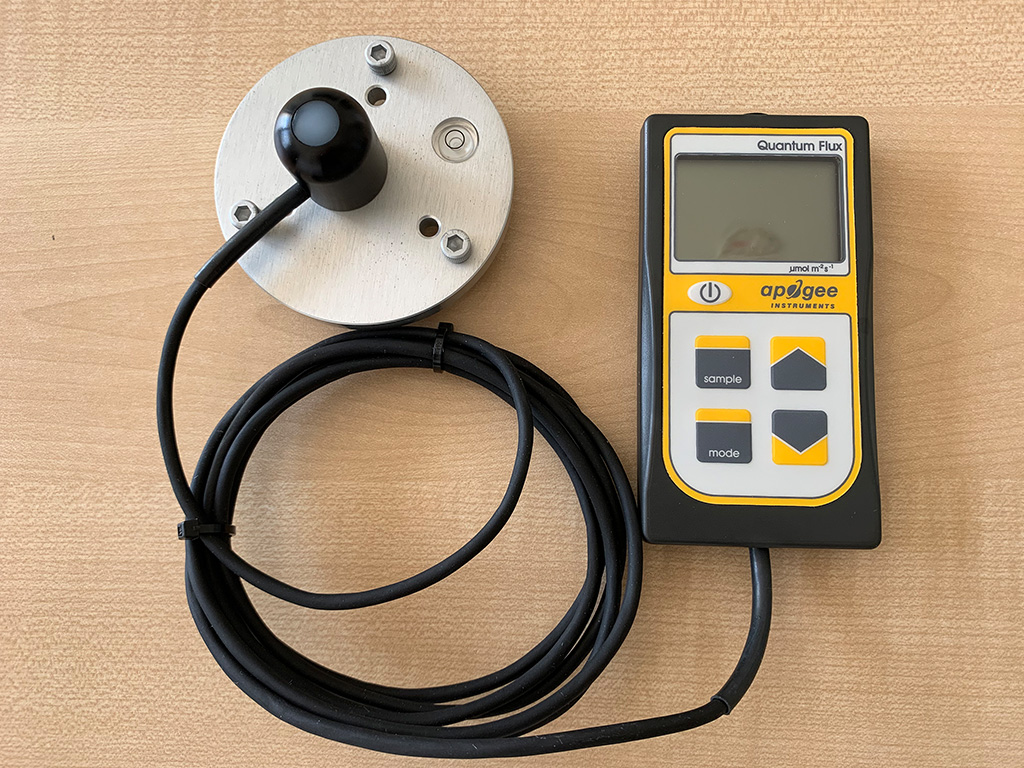
Light meter
The Apogee MQ-200 Quantum meter and sensor is used to measure light available to the turfgrass. The hand held unit, which can also be left in position on a base plate, has the ability to measure instantaneous or integrated photosynthetic photon flux.
A quantum refers to the amount of energy carried by a photon. Quantum meters approximate the quantity of photons between 400 and 700 nanometers. Photosynthesis is largely driven by the number of photons between these wavelengths so this radiation is called the Photosynthetic Photon Flux (PPF) and is measured in μmol m-2 s-1 (micromoles of photons per meters squared per second).

